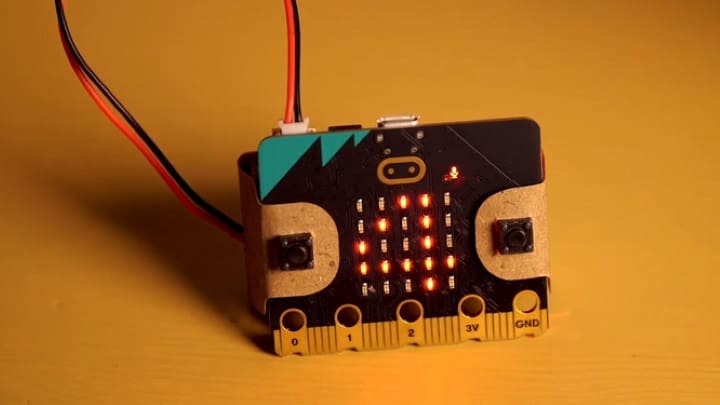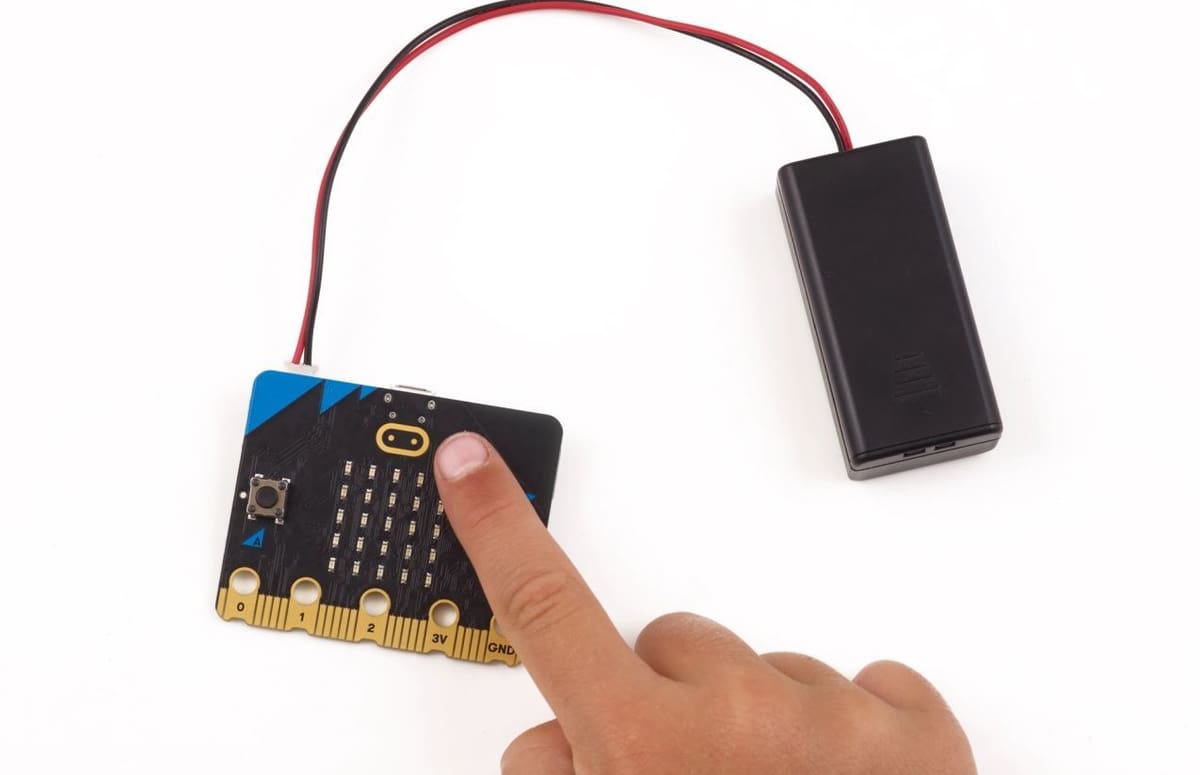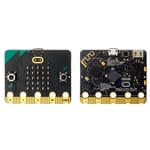Micro Board, Macro Potential
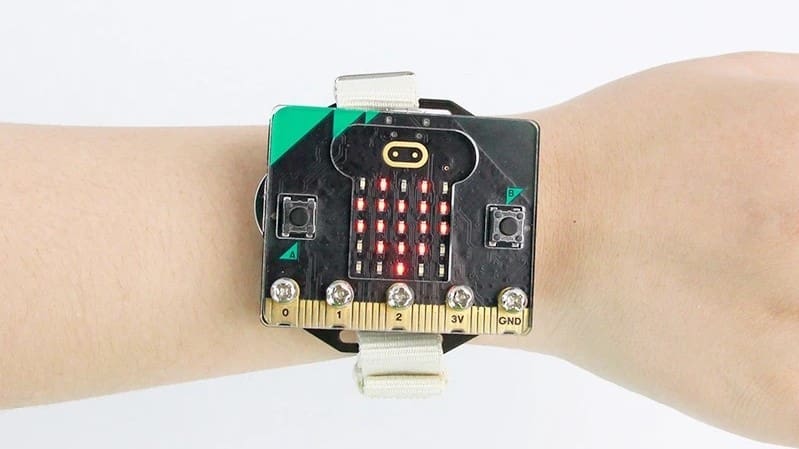
Single-board computers, commonly known as SBCs, are computers based on one circuit board. SBCs have become increasingly popular in the maker community for their capabilities in small projects, like a network-attached storage (NAS) device. Concerning 3D printing, you can use some SBCs (if they’re compatible and have the necessary specs) to make a 3D printer server, using platforms like OctoPrint or AstroPrint.
Brands like Raspberry Pi pioneered the SBC field, and since then, many smaller companies have made successful SBCs. One of these companies is the Micro:bit Educational Foundation, a non-profit organization dedicated to making a special type of SBC and educating people about its capabilities and uses.
The first Micro:Bit came about as a result of the British Broadcasting Corporation’s (BBC) initiative to educate more of the youth in the UK about technology and programming. The resulting BBC Micro:Bit is a small SBC with LEDs, buttons, ports, computing power, and more. One Micro:Bit was distributed, for free, to every seventh-grade student in the UK in 2016. Since then, Micro:Bit has continued its journey to strengthen young people’s knowledge about programming, computing, and other technologies.
The BBC Micro:Bit was also successful commercially, leading to the development of a second board known as the BBC Micro:Bit V2. The V2 is an improved version of the original, with some extra features like a touch sensor, microphone, and speaker.
The BBC Micro:Bit V2 is, like its predecessor, very small, powerful for its size, and useful for microcomputing projects, especially when size is a consideration. You can use 3D printing to make custom housings for the V2 to turn it into wearable device like watch, or use it for other small projects. The BBC Micro:Bit V2 costs around $20, but most retailers sell the board in a kit, along with a data transfer wire and a battery pack.
In this article, we’ll take a closer look at the BBC Micro:Bit V2, discussing its features, abilities and providing a comparison to a similar SBC. We’ll also share a list of the V2’s specs and links to where you can buy this board. Enjoy!
Features

The BBC Micro:Bit V2 has a plethora of great features, despite its small size.
Computing
The first thing to look at with any modern-day SBC is its computing power, and unfortunately, the Micro:Bit V2 isn’t super powerful. However, it’s important to remember its size and how it’s not really meant for high-computing tasks.
The BBC Micro:Bit V2 uses an ARM Cortex-M4 nRF52833 processor with a clock speed of 64 MHz. For comparison, the Raspberry Pi Zero (not overclocked) uses a clock speed of 400 MHz. This is definitely a disadvantage of the board, but you have to remember the Micro:Bit’s size and how the board’s focus wasn’t the computing power.
Furthermore, the V2 has 128 KB of memory (RAM), equivalent to 0.000128 GB of RAM (to compare it to other SBCs that offer 1 GB+ of RAM). So obviously, the Micro:Bit doesn’t have a lot of memory, but it does have a 2.4 GHz radio antenna as well as Bluetooth 5.1. You can also use a low-power Bluetooth mode, and these features somewhat compensate for the lower computing power.
LEDs
The LEDs on the Micro:Bit V2 are perhaps one of the most obvious features of the board as they take up most of the front side of the SBC. These LEDs open the doorway to many small projects, from a pixel diagram to an LED reaction (light up) caused by sensor detections.
The LEDs are set in a 5 x 5 pattern, for a total of 25 LEDs that light up in the color red (700 nm). Surprisingly, the LEDs can also be used as a light detector, which could be a fun starting point for a daylight-dependent project.
Ports & Sensors
The Micro:Bit V2 has a fair number of interface ports and sensors for its size. Because the board is commonly powered by a battery, there’s a port for using a battery power supply, usually AA batteries. There’s also a Micro-USB port for uploading programs and other data to the board from another device (laptop or PC), and when uploading information, you don’t have to power the board with a battery.
Other ports include the V2’s general-purpose input/output (GPIO) ports, also known as edge connectors. You can use these ports to add other features to the board, like a servo motor or maybe another sensor. There are also a 3 V power and a ground edge connector, which will also be needed for adding devices.
For the board’s sensors, the V2 has a built-in temperature sensor on its processing unit, which can help ensure the CPU isn’t burning up. Also, the board has a 3-axis accelerometer sensor that serves as a compass or a magnetometer, according to Micro:Bit. These functions allow the board to sense its orientation and the strength of nearby magnetic fields, but make sure to calibrate these features before incorporating them into a project or program.
The V2 also has a microphone and a speaker, two features that the original Micro:Bit lacked, which broaden the scope of how you can use the newer board. According to the website, the speaker can reach noise levels of around 80 dB, which is comparable to that of a smartphone. There’s also a built-in status LED so you can check if the microphone is powered or not.
Lastly, there’s a capacitive touch sensor on the Micro:Bit logo (front face of the board). You should be able to program the V2 to perform certain actions (like switching to a different LED pattern) when the capacitive sensor is touched.
The Bottom Line
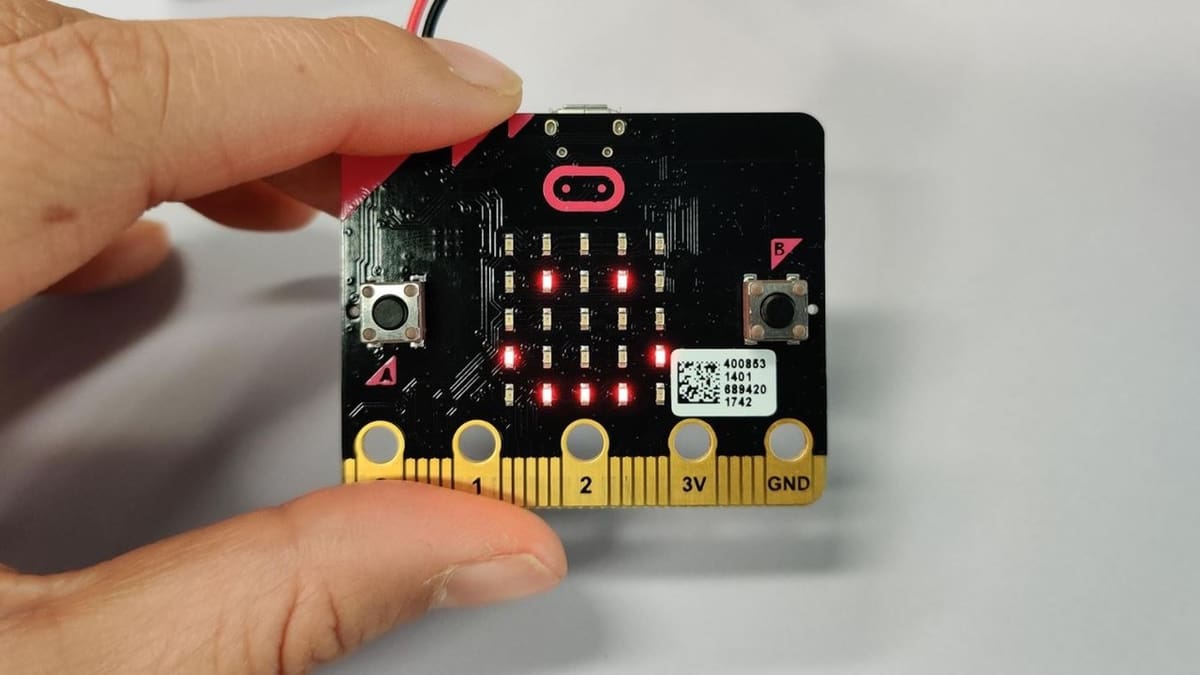
Overall, the BBC Micro:Bit V2 is a small board focusing on LED interactions and sensors. But how does this board compare to similar alternatives on the market? In this section, we’ll answer this question, using the Calliope Mini 2.0 for comparison.
The Calliope Mini is a LED-focused SBC in a curved-hexagon shape developed by the company Calliope. The Calliope Mini costs a good bit more (~$40) than the BBC Micro:Bit V2, but they are pretty similar in terms of capabilities.
To start, both boards have a 5 x 5 grid arrangement of red-colored LEDs, but the Calliope also contains one red-green-blue (RGB) LED that can turn any color on the spectrum. This extra any-color light increases the capabilities of the Mini compared to the Micro:Bit V2.
We mentioned previously that the Micro:Bit V2 is fairly light on computing power, but the Calliope uses the same model processor unit, so they are evenly matched here. Moreover, both boards contain many of the same types of sensors and other hardware. These include a temperature sensor, accelerometer, microphone, speaker, radio antenna, Bluetooth chip, buttons, and light sensor.
One difference between the boards is that the Micro:Bit V2 has a capacitative touch sensor, and the Calliope Mini 2.0 doesn’t. While this sensor may not seem like a big deal, it could be advantageous in small projects if you want to use more than the two programmable buttons.
In spite of the similarities, the Calliope prevails over the Micro:Bit when you look at the connections and ports. The Calliope Mini 2.0 has five edge connectors while the Micro:Bit V2 only has three, meaning that you can add more external features on the Mini than you can on the Micro. The Calliope also has two integrated extension ports, which allow you to add and connect expansion hubs to the board, and these aren’t included on the Micro:Bit.
The most obvious difference between the boards is their shape: the Calliope Mini is a curved hexagon while the BBC Micro:Bit is rectangular. While the Calliope Mini 2.0’s hexagon design provides you with more edge connectors, it’s more of an irregular shape, so it may be harder to integrate into projects and to create or purchase cases for.
All in all, when compared to a similar board, the Micro:Bit V2 definitely stands its ground; however, in general, it’s a little weak when it comes to computing power and the number of ports. The Calliope Mini 2.0 has more GPIO and expansion ports, but it’s also more expensive and has a shape that may be difficult to use in some scenarios. The BBC Micro:Bit V2, on the other hand, has fewer GPIO ports but makes up for it with its touch sensor and simple rectangular form.
Specifications
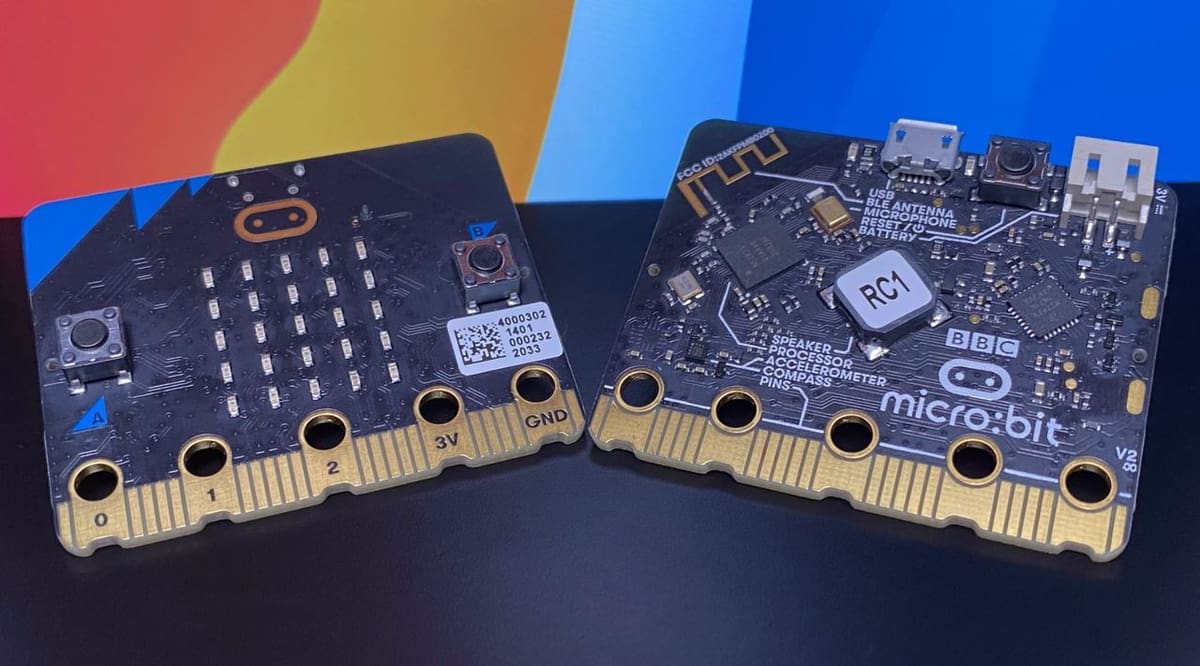
Below is a list of the BBC Micro:Bit V2’s specs, including both digital and physical details:
- CPU: Nordic ARM Cortex-M4 nRF52833 processor
- Memory: 128 KB
- Flash space: 512 KB
- Other digital features: 2.4 GHz radio, Bluetooth 5.1, 3-axis accelerometer sensor (compass and magnetometer), temperature sensor (in processor chip)
- Ports: Battery and power port, Micro-USB (data) port, 3 GPIO rings, 3-V power ring, GND ring
- Interface features: 25 LEDs (red), speaker, microphone, capacitative touch sensor, control buttons, reset button
- Compatible languages: MakeCode, MicroPython, App Inventor, Kodu, MicroBlocks, Arduino IDE, PyCharm, and more
- Dimensions: 4 x 5 cm
Where to Buy

You can purchase a BBC Micro:Bit V2 from one of these online retailers:
Lead image source: PCMag
License: The text of "BBC Micro:Bit V2: Review the Specs" by All3DP is licensed under a Creative Commons Attribution 4.0 International License.
CERTAIN CONTENT THAT APPEARS ON THIS SITE COMES FROM AMAZON. THIS CONTENT IS PROVIDED ‘AS IS’ AND IS SUBJECT TO CHANGE OR REMOVAL AT ANY TIME.

